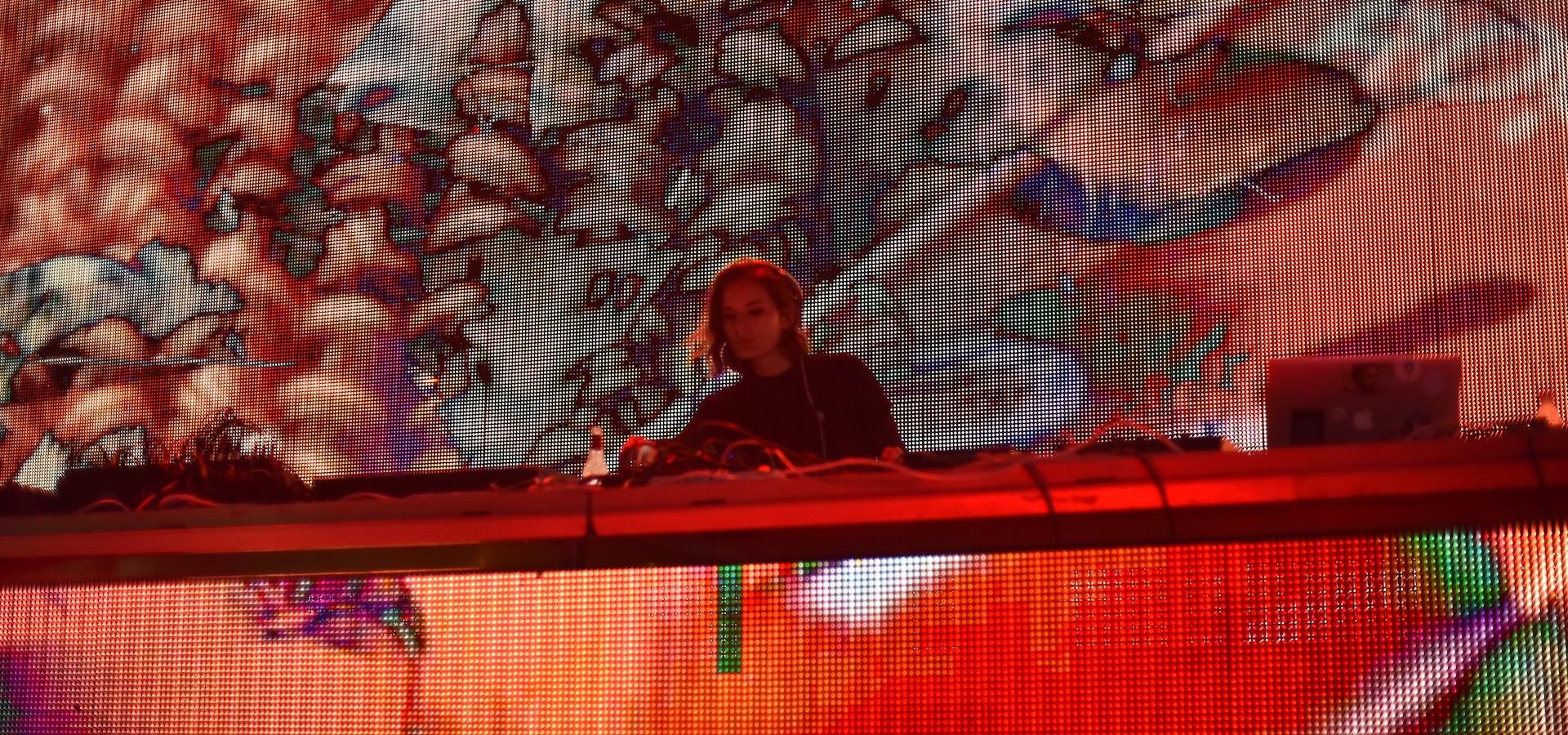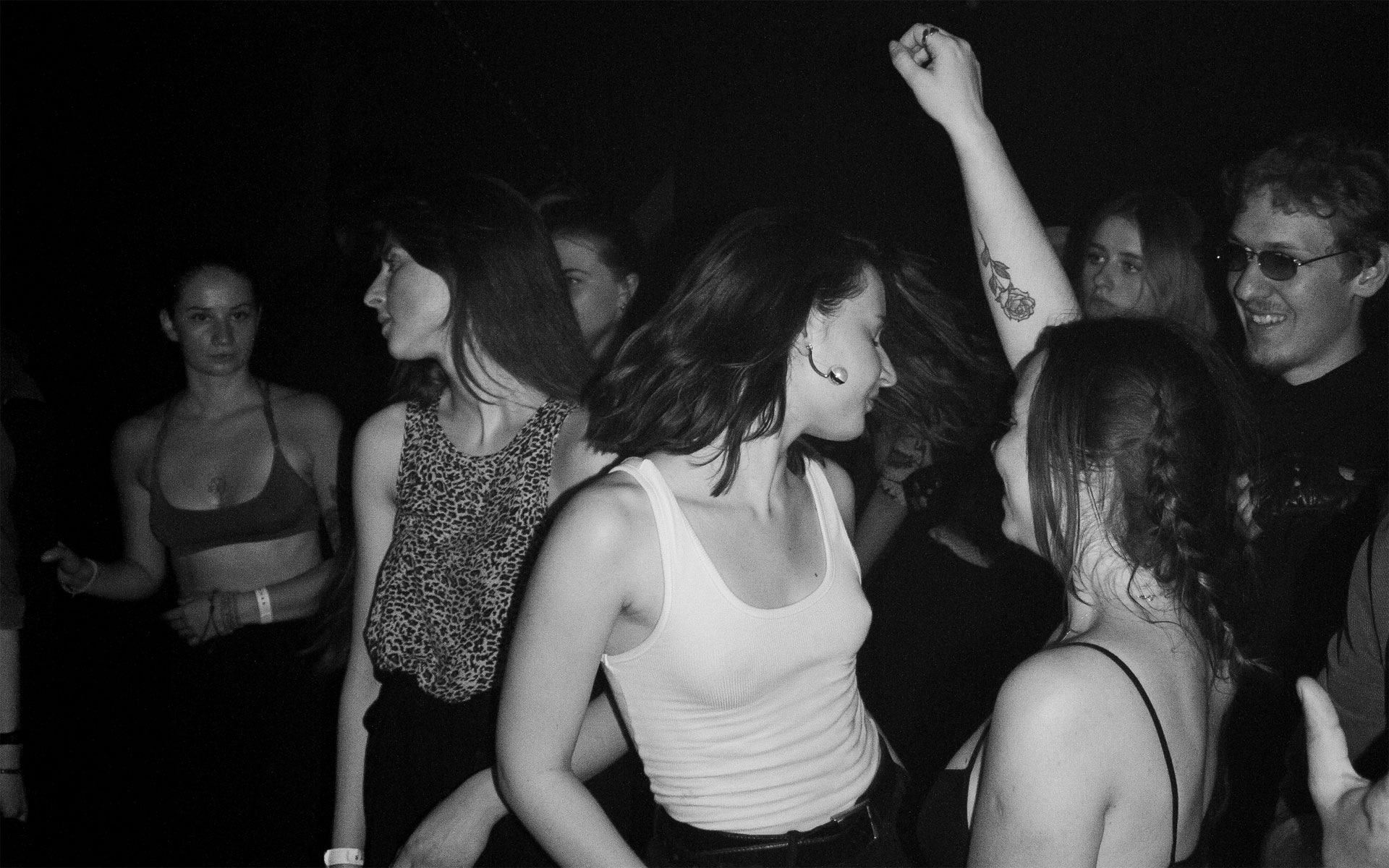After a turbulent decade for Hungarian techno, Budapest’s parties are flourishing against the odds
It might have been a difficult few years for nightlife in Hungary, but parties in Budapest are on the up. We talk to the organisers, producers, and DJs on the battle to protect nightlife in the capital
If you’re in Budapest on a Saturday night, you’ll undoubtedly spot large groups of loud tourists ambling from one bar to another. Nightlife in the Hungarian capital is synonymous with stag weekends and ruin bars. This bad rep masks the beating heart of Budapest’s party scene, born of experimental imprints, daring organisers, and devoted young DJs. Together, they have been pushing for local spaces for electronic music — a small slice of freedom in the midst of Hungary’s political conservatism. The battle to rescue Budapest’s underground scene from the grip of local government and money-hungry club owners is still ongoing. Yet Budapest’s talented crews and producers show no sign of giving up, determined to make the scene long-lasting and inclusive.
The underground music scene has been brewing for close to a decade, thanks to small labels and artists such as Crimson, Suhaid, and Galactic Jackson, who remain prominent. One of the first projects to dedicate itself to Hungarian underground sound was Farbwechsel Records. Founded by Bálint Zalkai, Martin Mikolai, Erik Bánhalmi, Daniel Jani, and Balázs Semsei, Farbwechsel began as a blog championing the new wave of musicians, DJs, and promoters that emerged in Budapest after 2010. When they launched an accompanying label in 2012, Mikolai confesses they had no expectations beyond the desire to release music they loved.
In the rise of Budapest’s underground scene, none has been more vital than LÄRM
“Back in the day, we released a lot of gear- and analogue-based house and techno stuff, noise and ambient albums, and even experimental jazz. Our main focus was releasing quality music from Hungary.” Their home-grown focus paid off when their first record, FARB001, made it into the end-of-year list of online record store Boomkat, selected by Stephan Bishop of Opal Tapes. Today they have over 40 records in their back catalogue.
Farbwechsel’s search for local talent inadvertently helped bring together artists in Budapest. Prior to 2010, Mikolai describes the scene as being quite fractured, with each DJ and producer chasing recognition: “That’s why we decided to join forces and show the value of collaboration for individuals.” Outside of Budapest, Hungarian artists suddenly began enjoying attention from bigger foreign labels, which Mikolai takes as proof that “we [at Farbwechsel] did our job well.”
“Farbwechel helped show the world that there is electronic music happening in Hungary,” explains Szilveszter Gergely Horváth, one of the label’s more famous musical exports, now releasing on house and techno labels like London’s The Lobster Theremin and Amsterdam’s Delsin under the moniker Route 8.
By itself, though, community is not enough — for artists to thrive, other factors need to fall into place. Venues willing to nurture talent are crucial. In the rise of Budapest’s underground scene, none has been more vital than LÄRM. The opening of this techno haven in 2014 was a pivotal moment, not just for the city’s nightlife, but for its thriving underground scene. “The electronic music scene here blew up when LÄRM opened,” says Horváth, who, along with Gergő Dankó and Ákos Vereczkey, holds a residency at the club with the night Designer Drums. “We had a few electronic music clubs before, like Corvin, but LÄRM was the first which had a proper soundsystem and a really strong programme. It opened up a lot of people’s minds as to what electronic music could be,” he recalls.
Perhaps counterintuitively, LÄRM is situated in a complex of ruin bars in the heart of the city’s 7th district — its stag-do hotspot, known for cheap booze, commercial music, and Brits behaving badly. In fact, it was as a reaction against these very surroundings that the club came to be. In 2013, Gábor Manek was working as a programme organiser at ruin bar Fogasház, which basically meant trying to make as much money from tourists as possible. He saw an opportunity in the abandoned former flats above the venue: “I just felt that Budapest lacked somewhere where the focus was solely on the music, not on commercial sound, girls, and tourists.”
He proposed the idea of opening a techno club to the owners. “My first intention was to create a space where Hungarian names could play in a professional setting, and where the audience could experience the power of music. In half a year, we garnered a lot of support and LÄRM slowly became a place where local and international DJs love to come and play.” The city boasts multiple multidisciplinary venues where DJs can play: Gólya, soon to move out of its location in the gentrifying 8th district; Toldi Klub, a popular destination for house and disco nights also run by Manek, which serves as a cinema by day. This year also saw Flashback Studio, a photo studio in the suburbs, host electronic music nights for the first time, and has already been lauded as Budapest’s answer to Berghain’s Panorama Bar. Still, LÄRM remains one of the few permanent spaces dedicated entirely to techno.
András Unger, who is Managing Editor of the Hungarian-language version of online music magazine Telekom Electronic Beats, describes the arrival of the club as a heartwarming moment: “Everybody was hungry for a proper basement techno club with good sound and a progressive mindset.” What LÄRM lacks in space — it has a capacity of just 200 — it makes up for with consistently high-quality programming. “If there was no LÄRM, we wouldn’t have had the chance to listen to the likes of The Black Madonna or Palms Trax or Peggy Gou before they blew up, or young prodigies from Job Sifre to Identified Patient and D Tiffany. LÄRM has always been a few steps ahead of the game thanks to our promoters with refined tastes,” Unger continues.
Yet while Budapest’s nightlife scene is steadily gaining momentum in some respects, its successes are closely linked to its losses, its motivations to its frustrations. Many pre-existing clubs have been forced to close in recent years. As Martin Mikolai points out, we cannot measure LÄRM’s success without taking these closures into consideration. “In just a few years, we lost a lot of major clubs: Kultiplex, Merlin, Mono, Mokkacukka. From then on, people were yearning for a proper underground club. And then when LÄRM arrived, people were relieved: ‘something, finally’.”
The growing desire to go out and rave has perhaps been prompted by something greater than just a lack of techno clubs. The political climate in Hungary has shifted dramatically since Viktor Orbán and his right-wing Fidesz party came to power in 2010. “I think nightlife has become really big because of the political situation here,” Horváth reflects. “A lot of people are stressed and anxious. Sometimes you can’t speak about the problems you’re having at work or elsewhere. A nightclub is a place where you can express yourself or leave all that behind.” And to give people the freedom to dance, you first need to provide space for music to thrive — something that today’s Budapest does not readily provide.
Horváth, who runs his own house label, This Is Our Time, with Gergő Dankó, is keen to see more variety in the city’s nightlife beyond LÄRM, and openness to more styles of electronic music: “It would be great to see another club open up.” He’s not the only one who thinks so. “We are really lacking in venues where electronic music aficionados can gather,” says Unger, who splits his time between music journalism and PR, both for LÄRM and Kolorádó festival. At the same time, he adds, there is “an intensifying need to move away from the so-called ‘party quarter’” of the 7th district. Tourists often don’t consider the damage stag-do culture has on nightlife. Clubs like LÄRM, without face control, take pride in being open to everyone. Big rowdy groups are hugely disruptive in small venues like LÄRM, and in an ever-compact city centre, they are impossible for locals to avoid.
“It’s hard to keep up the original vibe, because the ruin bar underneath [LÄRM] is four times bigger and always heaving,” Gabór Manek says. Though its focus is not limited to electronic music alone, Kolorádó festival was founded by Manek and other club organisers in part to address some of these issues. The festival joins the dots between different nightlife scenes in a way that LÄRM, for all its positives, cannot accommodate, giving locals an opportunity to party together for several days a year in the woods above the Hungarian capital.
“When you start a club, you need to invest a lot of energy into creating a community around it”
The challenge that organisers like Manek face is two-fold, and reflects the social and economic conflicts of contemporary Budapest. While there is a growing demand for underground nights, they don’t bring in as much business as clubs catering to tourists. Moreover, efforts to open new clubs have repeatedly been blocked, a sign of the disconnect between municipal authorities and younger residents; earlier this year, a proposed club called Vajda was supposed to open in the 8th district before being thwarted by changes to local licensing laws.
Club owners often lack the patience to foster loyal audiences, ultimately compromising on programming in order to stay afloat. “When you start a club you need to invest a lot of energy into creating a community around it, and that can take a year or two,” Horváth notes. “So, after a while, a club that started off with a vision turns into a regular club. We have a few clubs like this, for example Tesla.”
In keeping with club culture’s underground roots, these frustrations have provoked creative, illicit solutions. “Right now, it’s an uphill battle to try and open a new club. The upside to this is that we have a lot more house parties, illegal raves, pop-up events,” says András Kurucz (aka DJ Adis Abbé), who is behind secret party series santsat, which takes place in an undisclosed location outside of Budapest. “For the first ever party last summer we invited my producer friend R Vincenzo from São Paulo to play a live set. We hauled all the speakers and amps by hand up a steep mountain path at the break of dawn. We were expecting only a handful, but instead hundreds of people showed up.”
“Forest raves are definitely driving the scene now, at least during the summer months,” says Unger. Having grown up in the 2000s visiting Alkotótábor, an ongoing forest mini-festival dedicated to electronica, minimal, and dubtechno, the DJ is pleased to see that younger crews — like santsat and mhmm — are throwing their own DIY parties. “It’s like history repeating itself: the spirit of classic UK raves and freetekno parties is happening on the outskirts.”
This determined and DIY attitude means that Budapest has the potential to foster a vibrant, politically-engaged scene — as long as organisers, musicians, and punters stay mindful of issues of security and inclusivity. Laura Toth, or LAU as she is known on the decks, has only been DJing for two years, and is already a familiar face at club nights and illegal parties around Budapest. As a newbie on the scene, she says “the first push is sometimes all you need as a female DJ.”
With this in mind, she now runs workshops for aspiring DJs, with the aim of nurturing inclusivity in Budapest. In her own words: “I see a lot of organising happening from the bottom. Yet we still need a permanent space.” Apart from having assurance that no one can shut you down, clubs also offer safety in a way that illegal parties don’t. “Put simply, people getting roofied. You have more control over that if you have a permanent space.”
András Unger concurs that a change in mindset will help push the scene forward. “It feels like we are starting from scratch, again,” he says, referring to the return of DIY parties. “It would be good to see several nights run simultaneously without the worry that one will fail. Our biggest task is to educate, to open up people’s minds to electronic music beyond what they hear on the radio and at mainstream events.”
This is no barrier for Budapest’s 20-somethings, who have been turning more and more people onto underground, homegrown sounds. Outside of parties, local label Dalmata Daniel has set the bar high with their releases, working alongside rising stars such as techno wunderkind CT Kidobó. For fresh experimental music, the outlet EXILES is the best introduction to Hungarian electronic music. Budapest’s underground scene is defiant as ever — you just need to know where to look.
Text: Liza Premiyak
Top image: mhmm party at Pontoon by Kiki Minkova


